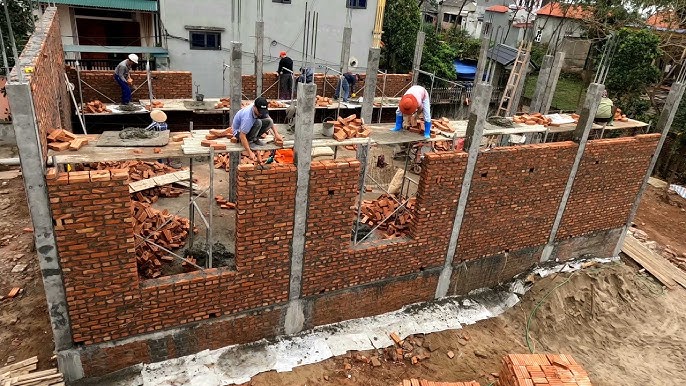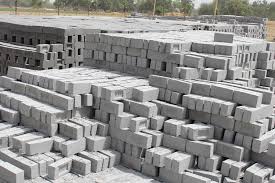An Overview
Estate Nirman Nigam (ENN) refers to a government or state-backed construction and development entity that aims to deliver affordable housing, infrastructure, and development projects. The objective of such organizations is typically to make construction more cost-effective for both public and private sectors, particularly focusing on economically weaker sections (EWS), lower-middle-income groups (LIG), and general population segments that need affordable living solutions.
In this context, the term "cheapest construction" can be understood as strategies, methodologies, and practices aimed at reducing the overall costs of construction while still ensuring safety, quality, and sustainability. The Estate Nirman Nigam, like other government-backed agencies, often focuses on minimizing costs through efficient resource management, using low-cost materials, optimizing labor, and implementing standardized construction techniques. Let’s explore various aspects that contribute to making construction cheaper in Estate Nirman Nigam.

1. Government Support and Subsidies
One of the most significant factors in making construction cheaper under Estate Nirman Nigam is the role of government policies and subsidies. Governments often provide financial assistance, tax breaks, and land at discounted rates, which drastically reduce the overall cost of construction. These financial incentives allow Estate Nirman Nigam to pass on the savings to developers and end-users.
Governments also often facilitate low-interest loans for construction projects, especially for affordable housing. The provision of infrastructure support, such as roads, water supply, sewage systems, and electricity, at subsidized rates, further cuts down the costs of development.
2. Efficient Use of Land
Land costs often make up a significant portion of the total cost of construction, especially in urban areas. Estate Nirman Nigam focuses on optimizing land use by planning high-density developments, such as multi-story buildings or apartment complexes. Vertical construction (building upwards rather than outwards) is a key strategy in densely populated regions to maximize land utilization. By focusing on compact designs and multi-use spaces, the cost of land can be amortized over a larger number of units, reducing the overall cost per unit.
Moreover, in many cases, the government may already own the land, which can eliminate the significant expense of purchasing or leasing land.
3. Standardization and Prefabrication
One of the most effective ways to lower construction costs is to standardize building designs and materials. Estate Nirman Nigam often utilizes modular or prefabricated construction methods, where large sections of the building are manufactured in factories and then assembled on-site. This not only speeds up the construction process but also reduces labor and material costs.
Prefabrication has multiple advantages:
- Lower labor costs: Prefabrication requires less on-site labor, as much of the construction happens off-site in controlled factory conditions.
- Faster construction: As components are pre-built and ready for assembly, the construction timeline is shortened, leading to cost savings.
- Reduced material wastage: Manufacturing parts in a factory setting leads to more precise use of materials and less wastage, helping to keep material costs lower.
Standardized designs and prefabricated components are also easier to procure in bulk, allowing for economies of scale. Repeating designs also means fewer complexities in the building process, further cutting costs.

4. Use of Low-Cost and Alternative Materials
Another significant strategy for reducing construction costs is the use of low-cost, durable, and locally available materials. Traditional construction materials like cement, steel, and bricks are expensive, but Estate Nirman Nigam often looks into alternatives that are both cost-effective and sustainable.
Materials such as fly ash bricks (produced from industrial waste), compressed earth blocks (CEBs), recycled steel, and bamboo can significantly reduce material costs. Bamboo, for instance, is an excellent alternative for structural purposes in certain regions and is both renewable and low-cost. Fly ash bricks are not only cheaper but also contribute to sustainability, as they make use of industrial by-products and reduce the need for raw resources like clay.
The use of local materials, such as stone and clay from the area surrounding the construction site, can also help lower transportation costs, reducing the overall expense. By using locally sourced materials, Estate Nirman Nigam also supports local economies and reduces its environmental impact.
5. Skilled Labor and Training Programs
Labor costs are a significant part of construction expenses. However, by training workers to enhance their skills and adopt efficient building practices, Estate Nirman Nigam can achieve cost savings. Skilled labor is more efficient, reducing the overall time required for construction and minimizing errors that could lead to costly reworks.
In many developing countries, Estate Nirman Nigam institutes training programs to improve the quality and productivity of the workforce. These programs teach laborers how to use modern, efficient building methods, as well as cost-effective construction techniques such as plastering and tiling using locally available materials.
Additionally, labor laws and regulations often have provisions to ensure that workers are paid reasonably, avoiding the cost of strikes, work stoppages, or the need for foreign or highly specialized labor.

6. Optimized Project Management
Effective project management can lead to substantial cost savings. Estate Nirman Nigam often employs rigorous planning and oversight to ensure that construction projects stay on schedule and within budget. This includes minimizing delays, reducing wastage, ensuring that resources are used efficiently, and preventing cost overruns.
Project managers often implement strategies such as:
- Centralized procurement: Buying materials in bulk, as opposed to piecemeal purchasing, leads to better deals and discounts.
- Just-in-time delivery: This reduces the costs associated with storing and managing materials on-site.
- Time-bound construction phases: Breaking down projects into smaller, time-limited phases prevents unnecessary delays and ensures smoother transitions from one stage to another.
By maintaining strong control over timelines and budgets, Estate Nirman Nigam can effectively keep construction costs in check.
7. Energy Efficiency and Sustainability
Sustainable construction techniques not only reduce environmental impact but also contribute to long-term cost savings. Estate Nirman Nigam can adopt green building standards that make use of energy-efficient systems and designs, which reduce the cost of utilities over time for the residents. Solar panels, efficient insulation, rainwater harvesting systems, and energy-saving appliances help to reduce the operational costs of a building.
Although some of these systems might increase initial construction costs, the long-term savings they provide through reduced electricity and water bills make them cost-effective over the life of the building. Additionally, buildings that meet sustainability standards often attract government incentives and are eligible for further subsidies.
8. Innovative Financing Mechanisms
Estate Nirman Nigam often partners with financial institutions, non-governmental organizations (NGOs), and private developers to finance construction projects. By tapping into multiple sources of funding, it can secure better terms and reduce the overall costs. This can include joint ventures, loans with low-interest rates, or even leveraging Public-Private Partnerships (PPP).
Such financial models help distribute risks and ensure that construction projects can continue without financial strain, ultimately lowering the cost burden on the developers and end-users.

Conclusion
Cheapest construction in Estate Nirman Nigam is driven by the combination of government incentives, efficient project management, low-cost materials, skilled labor, and sustainable design. By focusing on cost-effective solutions and minimizing inefficiencies, Estate Nirman Nigam can successfully deliver affordable housing projects that meet the needs of the population while ensuring quality, safety, and sustainability. This approach not only benefits the immediate stakeholders but also contributes to the overall socio-economic development of the community. By continuing to innovate and apply modern construction techniques, Estate Nirman Nigam plays a critical role in making affordable housing more accessible to the masses.
